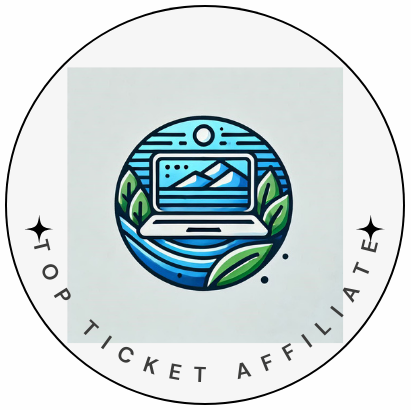
Affiliate marketing is like that trusted buddy who’s got your back while you earn some cash. Imagine getting paid for recommending a product you genuinely like—pretty sweet deal, right? At its core, an affiliate program works when a business rewards you every time someone purchases through your referral link.
This all started back in the mid-90s when companies realized how powerful word-of-mouth recommendations were online. Fast forward a few decades, and affiliate programs are booming everywhere, from high-end fashion to niche hobby blogs. The internet really took this concept and ran with it, transforming a marketing strategy into a full-fledged online industry.
So, who’s part of this mix? You’ve got merchants or retailers, the folks whose products or services we rave about. Then, we have affiliates—the savvy promoters who spread the word and earn commissions. Finally, consumers—the ones who buy the product that we’re so keen to recommend. Each plays a crucial role in this affiliate marketing saga.
Placing affiliate marketing within the bigger picture of internet businesses shows its versatility. Whether you run a personal blog or a full-scale e-commerce platform, this type of marketing can seamlessly integrate and provide a steady income stream, making it a popular choice for online entrepreneurs.
Identifying Opportunities: Niche Markets & Trend Analysis

You know the saying: Find your people, find your profit. To really make waves in affiliate marketing, diving into the right niche is key. Not all markets are oversaturated, and there’s always a cool, untapped audience out there just waiting for you to share something awesome.
Think about niche markets as these little pockets of potential. Areas where you can bring something new to the table can be your goldmine. Use tools like Google Trends or SE Ranking to spot emerging trends. Pay attention to how consumers pivot their spending and interests. A trend today can become a thriving market tomorrow.
Now, consumer behavior can be a bit tricky, but if you get it down, you’re ahead of the curve. Watch how they respond to different types of content online—video reviews, personal blogs, influencer posts. This insight will tell you where to place your efforts and which topics might get you the most traction.
Case studies of some killer affiliate strategies shine a light on what works. Success stories from health and wellness influencers or tech gadget reviewers can reveal strategies that you can apply to your affiliate journey. Learning from what others did right (and wrong) helps you craft a strategy that fits your unique style.
Building Trust: Influencing and Engaging Your Audience
Imagine you’re at a party, and someone you barely know recommends a product. You’d probably take that with a grain of salt, right? But if a good friend raves about something, you’re much more likely to check it out. That’s how building trust is crucial in affiliate marketing.
Creating genuine, relatable content is your bread and butter here. People want to connect with a real person, not just another salesperson doing their thing. Be transparent about your affiliations. Show them why you love the product (if you really do), and maybe even share a personal story or two. This way, you’re not just selling a product; you’re offering your audience a piece of your world.
Leveraging social proof is like having your audience hear from a bunch of their friends at once. Use testimonials and reviews to give your recommendations a boost. When others talk about the positive impact of a product, it adds layers of credibility.
An email list is your direct line to keep the conversation going. It’s like sending little notes to your best buddies with great tips, advice, and personal stories, building relationships over time. Start small—weekly updates work wonders.
Positioning yourself as an expert involves sharing bits of your knowledge. Whether it’s little-known tips or strategies in your niche, being the go-to person folks think of when they have questions or want advice is invaluable. It’s all about showing your audience that you’re not just another voice in the crowd, but someone who really knows their stuff.
Maximizing Revenue: Strategies and Best Practices

Crafting a call-to-action (CTA) that actually gets clicks can feel like finding the perfect way to wrap up a joke at a comedy routine. It needs to be compelling, clear, and give your audience no reason to hesitate. Be specific about what you want them to do, and make sure it feels like a natural next step from your content.
Choosing the right affiliate platforms can make or break your approach. From Amazon Associates to niche-specific programs (such as having a done-for-you business) ,each platform has its unique perks and quirks. Take the time to research which platform aligns best with the products you love and your audience’s preferences.
Driving organic traffic through SEO isn’t about tricking search engines; it’s about making sure your valuable content finds the folks who need it most. Focus on keywords that match your audience’s queries, but don’t let it turn your content into a string of robotic phrases. Use SEO as the bridge for people to find the insightful stuff you’re sharing.
Constantly keep an eye on performance metrics like click-through rates and conversions. It’s kind of like checking your speedometer to make sure you’re on track. These numbers guide you in fine-tuning your strategy, helping you figure out what’s hitting the mark and where you could switch gears.
Ultimately, achieving a great return on investment (ROI) doesn’t just happen by accident. It’s about being smart about where you invest your time and creativity, and it’s about learning from each campaign to create more of the content that your audience really digs.
Affiliate Disclosure
Here’s a little transparency: Our website contains affiliate links. This means if you click and make a purchase, we may receive a small commission. Don’t worry, there’s no extra cost to you. It’s a simple way you can support our mission to bring you quality affiliate marketing content.
